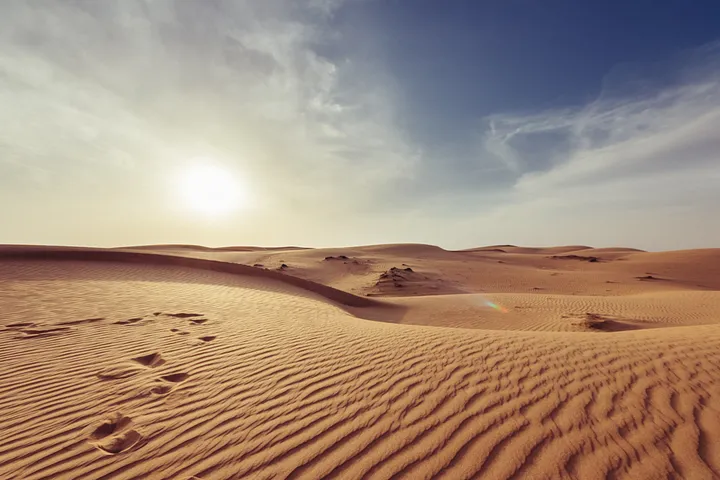

Secrets of the Sahara: A Desert Mirage
The Sahara Desert is not only the largest hot desert in the world but also a place filled with secrets and mysteries. Among its many wonders, one captivating phenomenon stands out: the desert mirage.
A desert mirage is an optical illusion that occurs when light is refracted, or bent, due to temperature differences in the air. This phenomenon creates the illusion of water or objects that are not actually present in the desert landscape.
One famous example of a desert mirage is the "Fata Morgana." This type of mirage creates the illusion of elaborate castles, cities, or even lakes in the midst of the Sahara. The name "Fata Morgana" comes from the Arthurian legend of Morgan le Fay, who was believed to create illusions.
Another intriguing example is the "Inferior Mirage." This type of mirage occurs when the hot desert surface heats the air just above it, causing a bending of light rays. As a result, distant objects appear higher or elongated, giving the impression of a false horizon.
References to desert mirages can be found in literature and folklore throughout history. One notable reference is in Antoine de Saint-Exupéry's "The Little Prince," where the protagonist encounters a mirage in the Sahara, adding to the mystical ambiance of the story.
Scientists have studied desert mirages to better understand the complex interplay between light, temperature, and atmospheric conditions. These studies have not only contributed to our understanding of optical illusions but also have practical applications in fields such as meteorology and astronomy.
In conclusion, the secrets of the Sahara include the enchanting phenomenon of desert mirages. These optical illusions, such as the Fata Morgana and the Inferior Mirage, have fascinated explorers, writers, and scientists alike. They serve as a reminder of the Sahara's allure and the mysteries that lie within its vast and ever-changing landscape.
Related Posts
© 2025 Invastor. All Rights Reserved

User Comments